Dinh-Luan Nguyen
Adversarial Light Projection Attacks on Face Recognition Systems: A Feasibility Study
Apr 17, 2020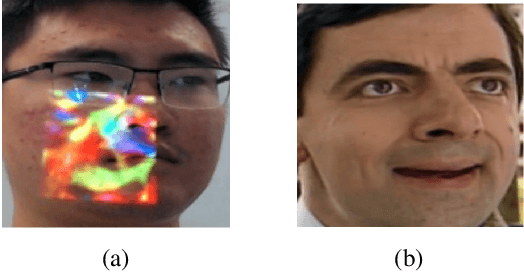
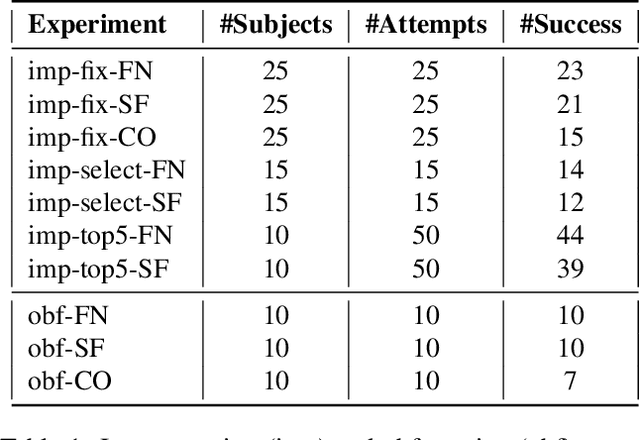

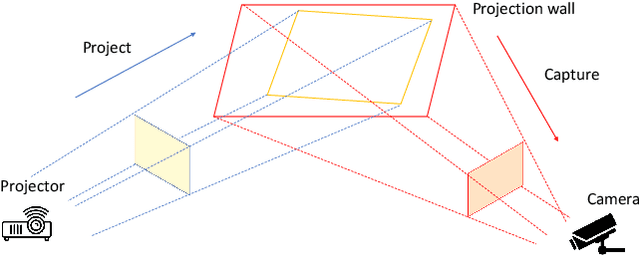
Abstract:Deep learning-based systems have been shown to be vulnerable to adversarial attacks in both digital and physical domains. While feasible, digital attacks have limited applicability in attacking deployed systems, including face recognition systems, where an adversary typically has access to the input and not the transmission channel. In such setting, physical attacks that directly provide a malicious input through the input channel pose a bigger threat. We investigate the feasibility of conducting real-time physical attacks on face recognition systems using adversarial light projections. A setup comprising a commercially available web camera and a projector is used to conduct the attack. The adversary uses a transformation-invariant adversarial pattern generation method to generate a digital adversarial pattern using one or more images of the target available to the adversary. The digital adversarial pattern is then projected onto the adversary's face in the physical domain to either impersonate a target (impersonation) or evade recognition (obfuscation). We conduct preliminary experiments using two open-source and one commercial face recognition system on a pool of 50 subjects. Our experimental results demonstrate the vulnerability of face recognition systems to light projection attacks in both white-box and black-box attack settings.
End-to-End Pore Extraction and Matching in Latent Fingerprints: Going Beyond Minutiae
May 30, 2019
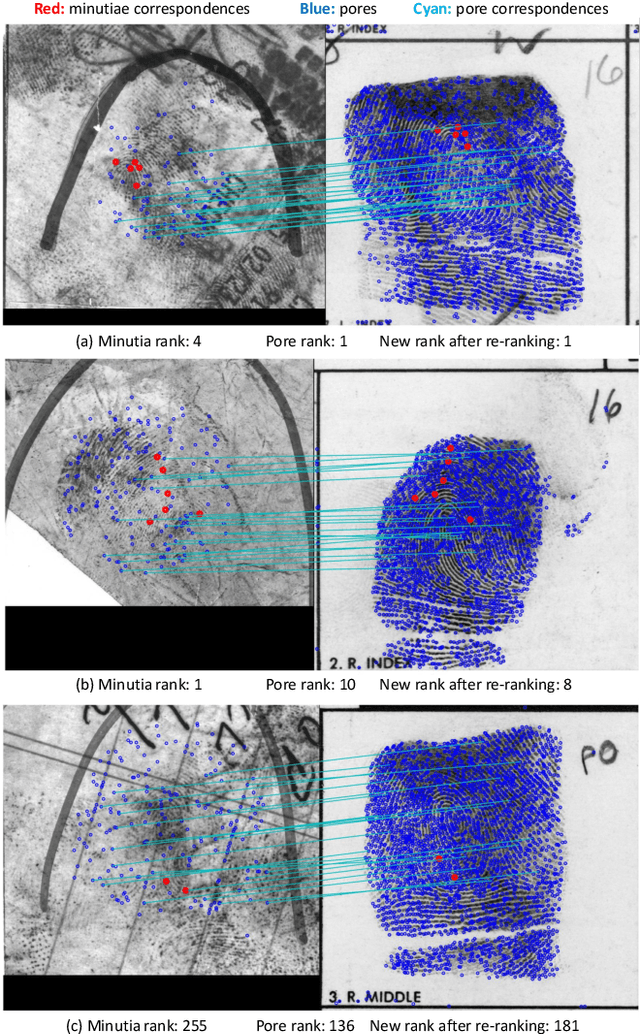
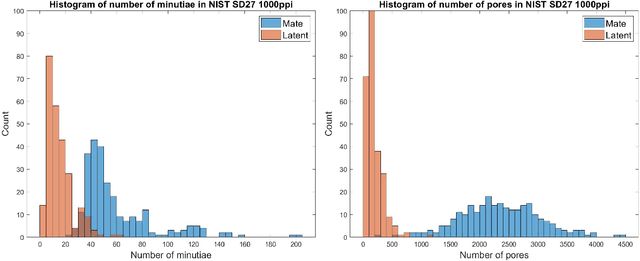
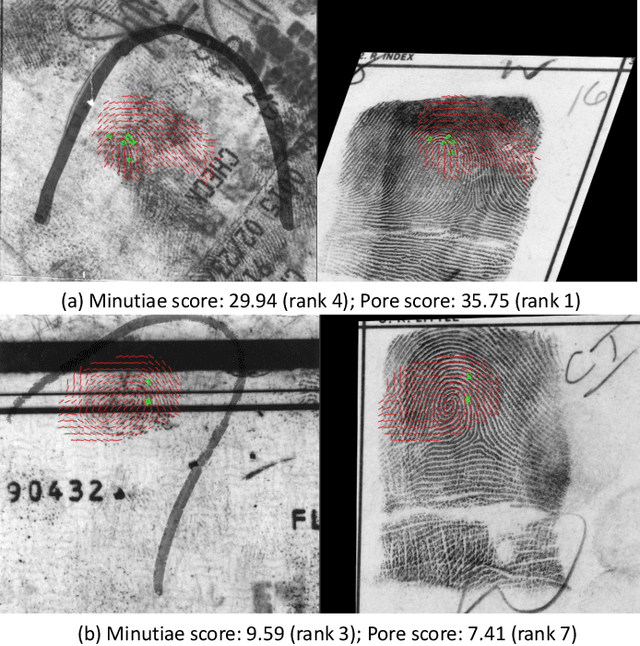
Abstract:Latent fingerprint recognition is not a new topic but it has attracted a lot of attention from researchers in both academia and industry over the past 50 years. With the rapid development of pattern recognition techniques, automated fingerprint identification systems (AFIS) have become more and more ubiquitous. However, most AFIS are utilized for live-scan or rolled/slap prints while only a few systems can work on latent fingerprints with reasonable accuracy. The question of whether taking higher resolution scans of latent fingerprints and their rolled/slap mate prints could help improve the identification accuracy still remains an open question in the forensic community. Because pores are one of the most reliable features besides minutiae to identify latent fingerprints, we propose an end-to-end automatic pore extraction and matching system to analyze the utility of pores in latent fingerprint identification. Hence, this paper answers two questions in the latent fingerprint domain: (i) does the incorporation of pores as level-3 features improve the system performance significantly? and (ii) does the 1,000 ppi image resolution improve the recognition results? We believe that our proposed end-to-end pore extraction and matching system will be a concrete baseline for future latent AFIS development.
End-to-End Latent Fingerprint Search
Dec 26, 2018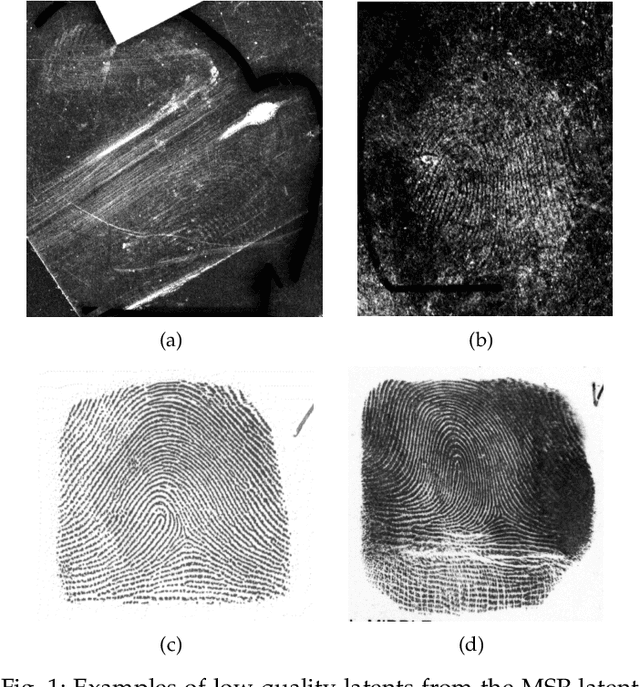
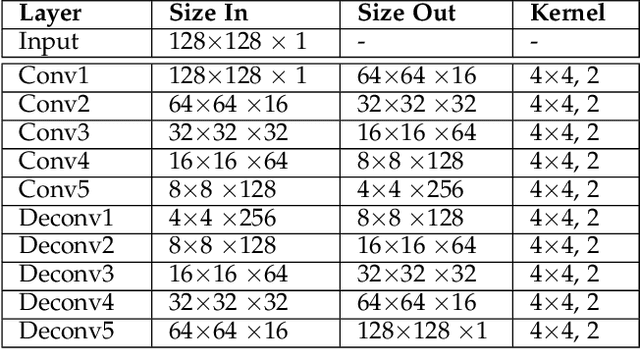
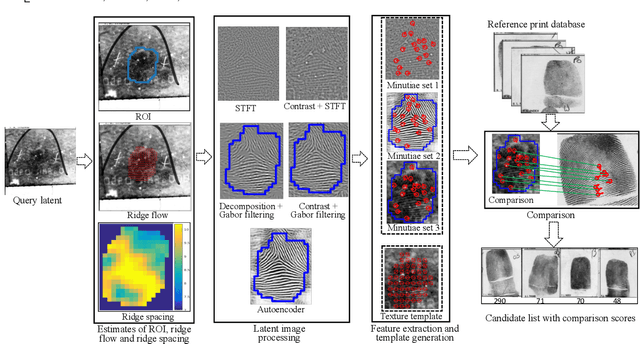
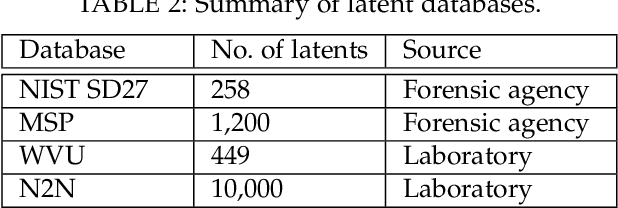
Abstract:Latent fingerprints are one of the most important and widely used sources of evidence in law enforcement and forensic agencies. Yet the performance of the state-of-the-art latent recognition systems is far from satisfactory, and they often require manual markups to boost the latent search performance. Further, the COTS systems are proprietary and do not output the true comparison scores between a latent and reference prints to conduct quantitative evidential analysis. We present an end-to-end latent fingerprint search system, including automated region of interest (ROI) cropping, latent image preprocessing, feature extraction, feature comparison , and outputs a candidate list. Two separate minutiae extraction models provide complementary minutiae templates. To compensate for the small number of minutiae in small area and poor quality latents, a virtual minutiae set is generated to construct a texture template. A 96-dimensional descriptor is extracted for each minutia from its neighborhood. For computational efficiency, the descriptor length for virtual minutiae is further reduced to 16 using product quantization. Our end-to-end system is evaluated on three latent databases: NIST SD27 (258 latents); MSP (1,200 latents), WVU (449 latents) and N2N (10,000 latents) against a background set of 100K rolled prints, which includes the true rolled mates of the latents with rank-1 retrieval rates of 65.7%, 69.4%, 65.5%, and 7.6% respectively. A multi-core solution implemented on 24 cores obtains 1ms per latent to rolled comparison.
Automatic Latent Fingerprint Segmentation
Sep 04, 2018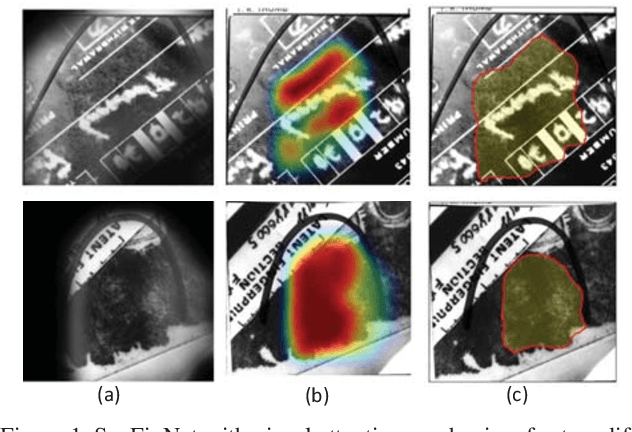
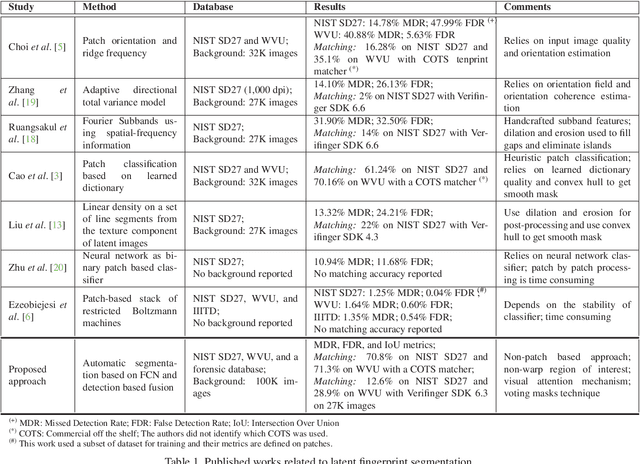
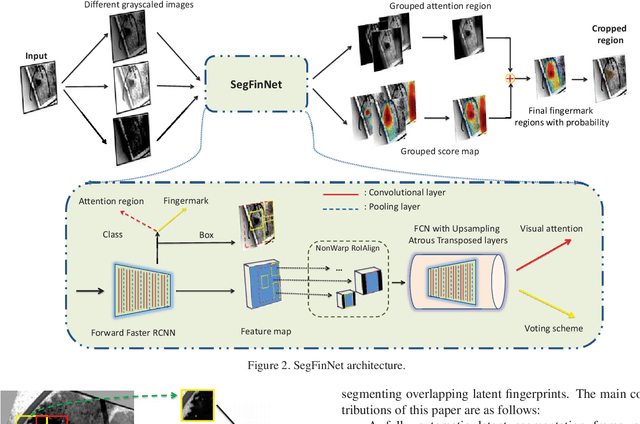
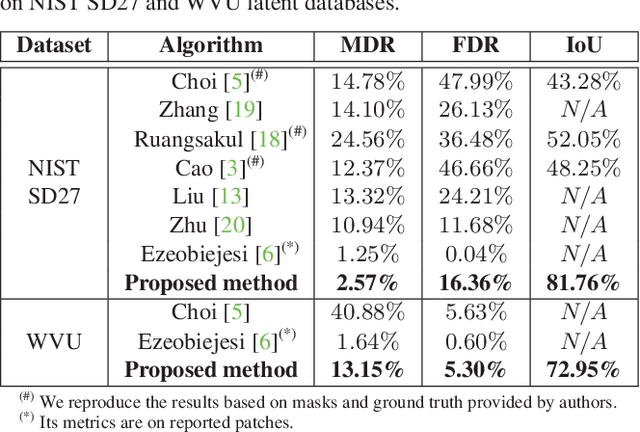
Abstract:We present a simple but effective method for automatic latent fingerprint segmentation, called SegFinNet. SegFinNet takes a latent image as an input and outputs a binary mask highlighting the friction ridge pattern. Our algorithm combines fully convolutional neural network and detection-based approaches to process the entire input latent image in one shot instead of using latent patches. Experimental results on three different latent databases (i.e. NIST SD27, WVU, and an operational forensic database) show that SegFinNet outperforms both human markup for latents and the state-of-the-art latent segmentation algorithms. We further show that this improved cropping boosts the hit rate of a latent fingerprint matcher.
Robust Minutiae Extractor: Integrating Deep Networks and Fingerprint Domain Knowledge
Dec 26, 2017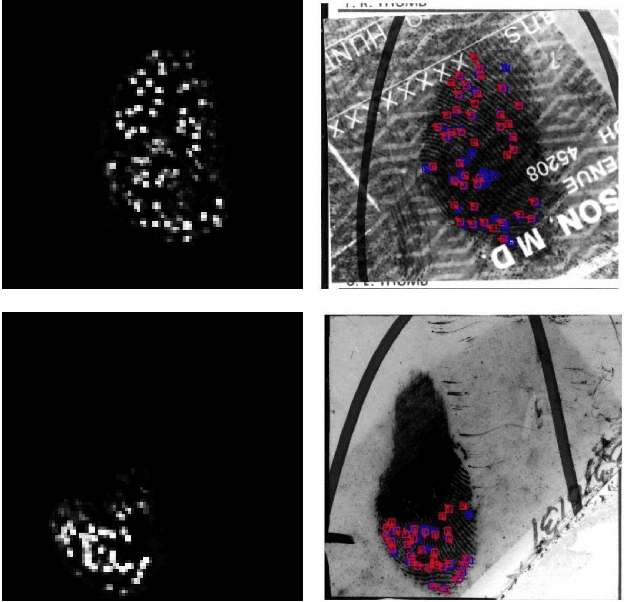



Abstract:We propose a fully automatic minutiae extractor, called MinutiaeNet, based on deep neural networks with compact feature representation for fast comparison of minutiae sets. Specifically, first a network, called CoarseNet, estimates the minutiae score map and minutiae orientation based on convolutional neural network and fingerprint domain knowledge (enhanced image, orientation field, and segmentation map). Subsequently, another network, called FineNet, refines the candidate minutiae locations based on score map. We demonstrate the effectiveness of using the fingerprint domain knowledge together with the deep networks. Experimental results on both latent (NIST SD27) and plain (FVC 2004) public domain fingerprint datasets provide comprehensive empirical support for the merits of our method. Further, our method finds minutiae sets that are better in terms of precision and recall in comparison with state-of-the-art on these two datasets. Given the lack of annotated fingerprint datasets with minutiae ground truth, the proposed approach to robust minutiae detection will be useful to train network-based fingerprint matching algorithms as well as for evaluating fingerprint individuality at scale. MinutiaeNet is implemented in Tensorflow: https://github.com/luannd/MinutiaeNet
 Add to Chrome
Add to Chrome Add to Firefox
Add to Firefox Add to Edge
Add to Edge